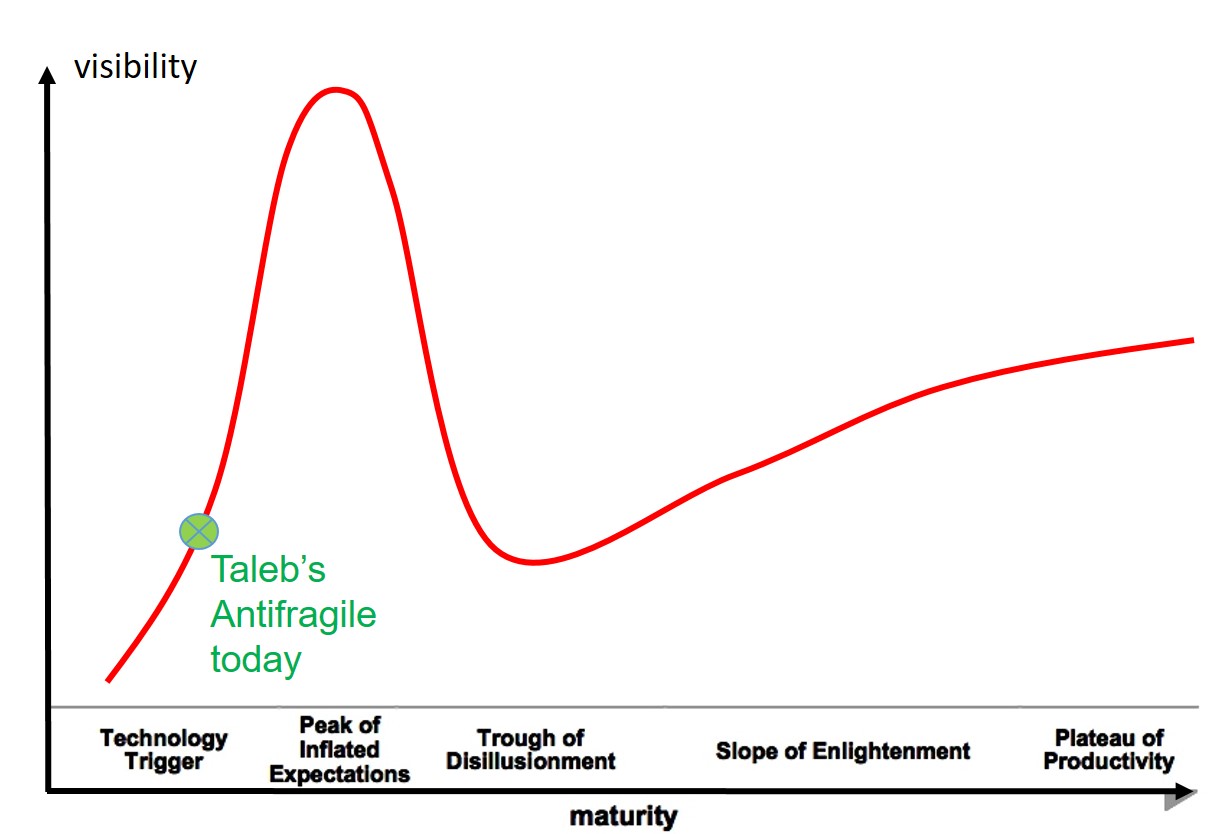I just had the major misfortune of acquiring a copy of the latest Antifragile bandwagon-jumper book, ‘The Anti-Fragility Edge’. So bad was it that it prompted me to compose my first ever Amazon review, in a no doubt vain attempt to warn people away from the dangerous, counter-productive monstrosity I believe it to be.
The first problem is that Nassim Nicholas Taleb ignited what looks set to become a pretty big fire when he gave the world the word antifragile back in (was it really that long ago?) 2012.
The bigger problem, looking at the four years that have passed since the book first appeared is perhaps that Taleb is, to quote a different favourite author, ‘too far ahead of the crowd for people to recognise he’s part of the crowd’. And that includes – on the evidence of The Anti-Fragility Edge or any of the other handful of books that have tried to cash-in on the antifragile meme – all the early-adopters required to turn the initial spark into a proper flame aren’t up to the task at hand.
This is somewhat ironic when I think about what antifragile is all about: making systems stronger by subjecting them to adversity. Having your good work misinterpreted and mangled by people who clearly don’t understand what they’re doing, could, in some weird parallel world be the exceptions that prove the rule. Maybe, Nassim Taleb, is sat in his lab thinking, these terrible books are the very stressors that my beautiful Antifragile baby needs in order to become the global phenomenon it deserves to be?
Sadly, I don’t think the world works that way. Nor does antifragility. At least not at this point in its evolutionary history.
One of the key ideas behind subjecting systems to adversity, is that you need to know just how much adversity. It’s a classic Goldilocks and the Three Bears scenario: too little adversity and the system doesn’t need to shift and so doesn’t evolve; too much adversity and you kill it.
In TRIZ terms this need to find ‘just the right amount’ of adversity represents a classic contradiction problem. Antifragile needs adversity and no adversity.
Solving the contradiction means knowing exactly when and how to separate the two contradictory requirements. And, when it comes to the rise – or otherwise – of an important new idea, one of the best ways to understand the separation dynamic is to bring the Hype Cycle in to play. What the Hype Cycle tells us is that there are clearly different stages in the evolution of the new idea. During some of the stages, the system is very vulnerable and needs relatively little adversity, and then during others, the system is much more accommodating and actually needs lots of adversity in order to reach a meaningful maturity.
The big problem with the current crop of bandwagon-jumpers is that they represent exactly the wrong kind of adversity at the wrong time. The Anti-Fragility Edge, for example, purports to be a ‘How To’ book. In theory, this is a good idea. Taleb’s book is a ‘what’ and a ‘why’ book. If antifragile ideas are going to take hold, someone will have to hold the hands of the fragile and guide them towards greater levels of antifragility. No ‘how to’ book, no widespread adoption. But if the ‘how to’ book that people locate is a really bad book, all it does is kills the idea before the idea has a chance to get off the ground.
In the long term the dire post-Taleb antifragile literature will no doubt fade into historical insignificance. In the meantime, the fact that they’ve appeared when they have means the only impact they will have is to delay meaningful action. And my guess, given the enormous operational-excellence-driven fragility of most of the enterprises on the planet right now plus the even bigger narcissist-driven instability heading in all our directions, is that this can only be a bad thing. Predictable, maybe, but bad nevertheless.


